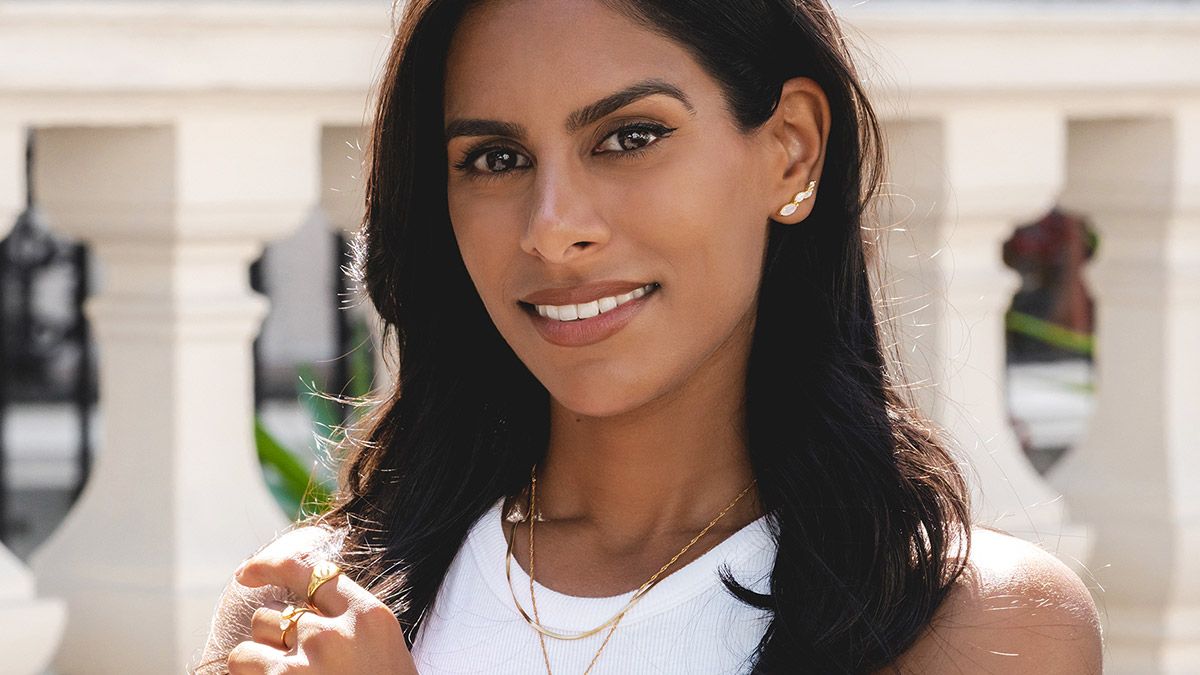Once a quieter corner of fashion retail, jewellery is now thriving in the loudest part of the internet: TikTok. From 15-second stack-styling videos to six-hour live streams selling freshwater pearls by the kilo, consumers are more willing than ever to purchase semi-precious stones and trinkets directly from the platform. But for now, only certain brands are finding success. In China, the jewellery live-stream market is booming. At some pearl suppliers in China’s Sha Hu area, there can be 50 streamers working around the clock to shift product, says Jeremy Shepherd, founder and CEO of Los Angeles-based dealer Pearl Paradise. For a long time, this felt like a phenomenon reserved for China and the Asia-Pacific. But after the launch of TikTok Shop in 2023, jewellery players — particularly those in the demi-fine jewellery space — found there was an appetite for jewellery sold live in the West, if positioned correctly. UK-based jewellery brand Rani & Co has seen strong revenue growth in adopting this sales funnel, particularly for its mid-to-premium price range (average £65). Live streaming acts as a show-and-tell opportunity for brands to engage with viewers in real time, sharing details about the products, as well as styling and layering tips. “The average order value during live streams is £85. In a typical two to two-and-a-half-hour TikTok Live, we generate between £400 and £700 in sales,” says Rani & Co founder Ramona Gohil. “By going live around three times a week, we’re currently adding an extra £1,000-plus in weekly revenue.” British demi-fine lab-grown diamond brand L’Era Jewellery’s biggest order to date came through TikTok Shop. “It was nearly £1,500,” says co-founder Lara Sofia-Mar, adding that at its peak, TikTok Live and TikTok Shop were contributing to over 50 per cent of L’Era’s revenue, though the brand has since grown its direct website traffic, based on boosted brand awareness. L’Era sees anywhere from 3,000 to 5,000 viewers per three-hour stream, three times a week. More so than other online formats, live streaming feels closer to the in-store experience, Sofia-Mar adds. “We chat a lot about ourselves, we talk about life,” she says. “Viewers will ask, ‘Can I see it upside down? Oh, now, can you show me the silver one?’” Quirky jewellery brand July Child has been TikTok live streaming for the last six months. Today, 30 per cent of the brand’s revenue is generated via the platform’s shopfront. “We’ve all seen the rise in founder-led marketing this year,” founder Sinead Flood says. “People are gravitating towards people, not brands. There’s no script; no edits. [Live streaming] feels more human.” For now, live streaming and social commerce are more suited to the demi-fine space. For fine jewellery brand Do Amore, which has a significantly higher average price point (products start at approximately $800), live streams act as a marketing play to drive Gen Z awareness, rather than sales. “We were doing [live streams] pretty consistently. It definitely did not drive sales when it came to high-ticket items like engagement rings or fine jewellery. The purchase is too personal and considered for most people to make on the fly,” Do Amore founder Krish Himmatramka says. “A challenge is the price sensitivity of the TikTok audience. Many users are looking for bargains, which is why heavy discounting is so common,” says Rani & Co’s Gohil. Brands like mass-market player Bohomoon go live regularly with £10 sales and 50 per cent discounts, speaking to this need for cheap, fast shopping. Flash sales like these are popular with the TikTok audience, and so are favoured by the algorithm, Sofia-Mar agrees. “You can see that TikTok pushes more people into your live streams when you do it,” she explains. Despite the price sensitivity of TikTok’s young user base, L’Era has begun to corner a higher priced — arguably higher quality — niche. A simple search on TikTok Shop reveals that most jewellery products are priced below £20. “I can’t see anybody else selling as much as we sell at our price point,” Sofia-Mar says. “While £70 would be the average [order value], some are £300 or £400,” she adds, citing her ‘no pressure’ sales method as key to making a sale. “I always say on the live stream, ‘If you want to see something, ask me, you don’t have to buy it.’ I don’t want [viewers] to feel pressured.” Running live streaming for a brand is no small responsibility, founders agree. Brands finding success go live multiple times a week or day, still a far cry from the 24 hours of streaming from sellers in China. “The more consistently I go live, the more TikTok’s algorithm pushes our content to new viewers, and the more familiar returning customers become with the brand,” says Gohil. Sofia-Mar concurs: “We have set stream times, and we do not deviate.” July Child’s Flood adds: “[The] burnout is real. Don’t be afraid to bring in support. Find people who genuinely love talking and selling. It doesn’t have to be you every time.” Choosing a live format that works and building momentum inside the live stream is a way to keep viewers engaged, she adds. “Packing orders is consistently our best-performing format. We ask viewers to like and share regularly, and we’ll do surprise giveaways when we hit key targets. For example, we’ll add a freebie to someone’s order when we hit 50,000 likes.” While streaming is about selling, it also creates space for community. “I’ve noticed that many of the same people return for each live stream, and over time, you start to build real relationships with your audience,” Gohil says. Sofia-Mar says a group of 90 regular TikTok Live viewers have since started a Discord channel dedicated to the brand. “Anytime anything happens on our website, they’re all chattering.
Source
Is jewellery ready for live streaming?

